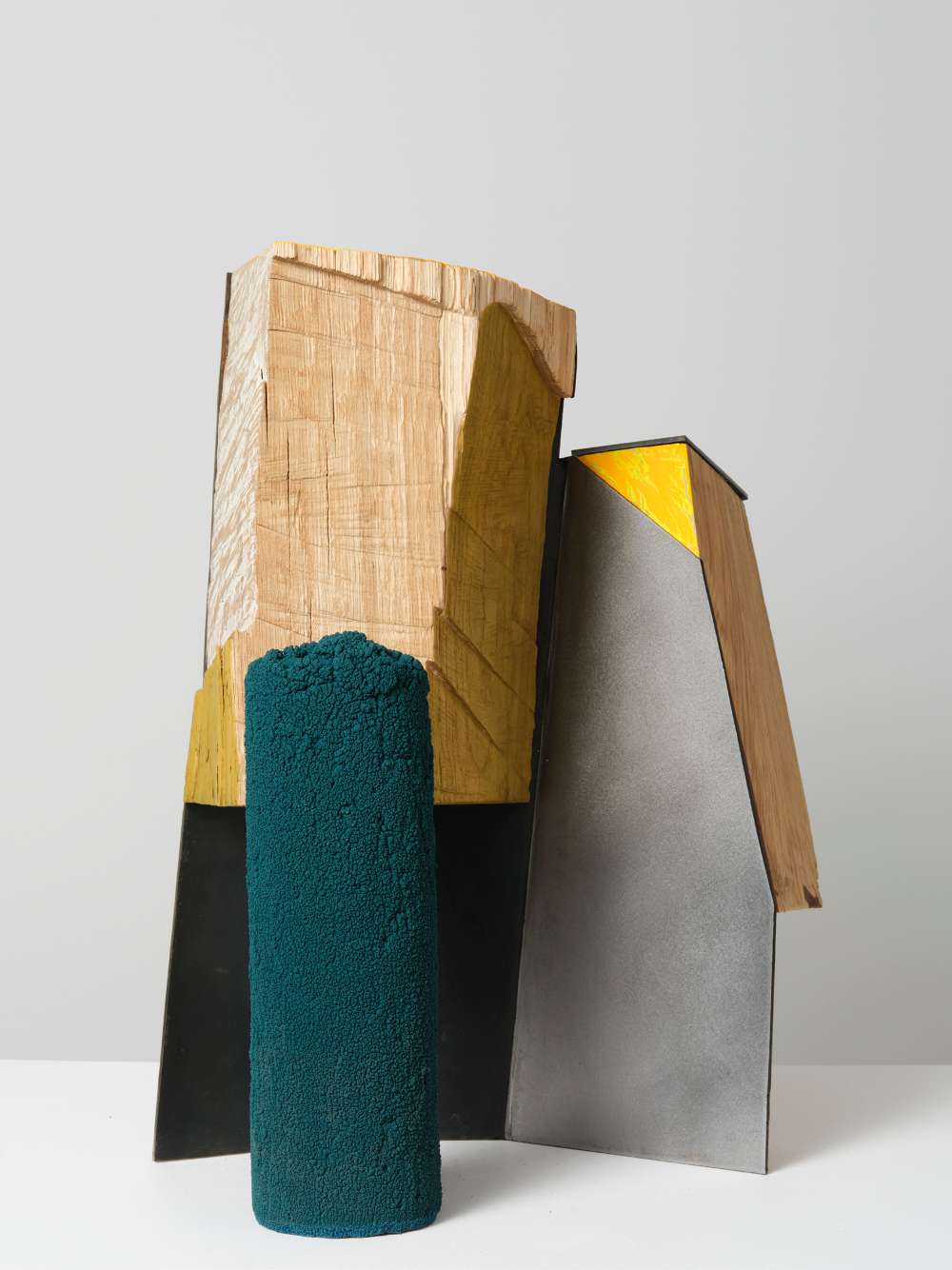
For a broad swath of people, an art fair is not a place of wheeling and dealing but a place to look at art. It’s always an experience to wander the aisles and feel the jadedness subside, the LED glare dim, and the sample-sale vibe fade, and be moved by great work that stands out in the sea of booths.
This year’s Frieze New York didn’t disappoint. Here is a quick look at some eye-catching booths and works that resonated—from the profound to the quirky, from pieces by established artists like Arlene Shechet to works by underground legends and up-and-coming talents to watch.
Robert Mangold and Arlene Shechet
Pace Gallery
New York
Robert Mangold and Arlene Shechet’s works are in dialogue at Frieze New York. Courtesy of Pace Gallery.
Among the horde of press, collectors, and other VIP fairgoers, Pace Gallery’s booth stood out as a fully formed (and satisfyingly serene) oasis of an exhibition. Robert Mangold and Arlene Shechet both explore different forms of abstraction, and they reached mind-meld affinity and true dialogue—Shechet had already began making the latest sculptures when a visit to the 86-year-old minimalist’s studio informed her color choices. The result was masterful interplay.
There is a lot to unpack in the Frieze selection, with Mangold’s ruminative wall geometries paired with Shechet’s assemblages of wood, metal, and touches of ceramics, some so porous and mottled they add a biomorphic organic element to the form. She also christened them with titles like Better Half and Brother, exalting the interpersonal and familial ties that bind. Shechet’s small-scale works are the preamble to “Girl Group,” her Storm King exhibition which opens later this week and features towering sculptures, some as tall as 30 feet.
Roe Ethridge
Andrew Kreps Gallery
New York
Roe Ethridge’s Vase Face with Vivianne Westwood (2023) at Frieze New York 2024. Photo: Elvin Tavares.
Ethridge proudly skirts the line between art and commercial photography. His vision doesn’t differ in his dual practice; his commercial work meshes seamlessly with his gallery outings. This sensibility is quite modern. Who knows? Maybe his Frieze contribution was originally a magazine commission? Whatever its origin, this gaudy portrait, with just the hint of a face reflecting through the vase, was a striking and original viewpoint at the fair. Overripe flowers, over-saturated color, fake-ass nails. It’s all just right.
Stanley Stellar
Kapp Kapp
New York
Stanley Stellar, October (1982). Courtesy of Kapp Kapp.
In the shadow of the Vessel, which is an even bigger eyesore now with a weird snack bar plopped in front of it, it was refreshing to see Stanley Stellar’s vintage photographs of a bygone Manhattan—one of dilapidated piers and West Village revelry and debauchery. The 1980s photographs on display were taken just about a mile south but they’re a universe away, and depict a queer fantasia intertwined with a grim cityscape. In some images, Keith Haring’s graffiti is visible in the background of the abandoned warehouses used for cruising. Kapp Kapp devoted its booth to Stellar and reprinted the sold-out edition The Piers in time for the fair.
Kembra Pfahler
Emalin
London
Kembra Pfahler, Isis Water (1998). © Kembra Pfahler Photo: Reinis Lismanis. Courtesy of the artist and Emalin, London
Equally transgressive and earnest, New York’s DIY punk performance stalwart Kembra Pfahler has been a blue-skinned pillar of the city’s arts community since the 1970s. On offer are framed mockups for 1990s show flyers from the Voluptuous Horror of Karen Black, her band that doubles as a maximalist theatrical shock art troupe. Pfahler can currently be seen on global billboards espousing her conceptual theories on Availabism (using stuff that’s available) as part of “The Manual of Action,” a series she originally began developing in the 1980s. The billboards are a collaboration with the art collective CIRCA, and the latest manifestation of her singular practice finally getting its due.
Charisse Pearlina Weston
Patron
Chicago
Patron’s Charisse Pearlina Weston solo booth at Frieze New York 2024. Photo: Silvia Ros. Courtesy of the artist and Patron.
The Brooklyn-based conceptual artist Charisse Pearlina Weston finds beauty and form in harsh materials and has a particular penchant for smashed glass and concrete. Her work deals with the Black experience—ranging from resistance to technologies of surveillance. But she wields an astute aesthetic sense (and plenty of abstraction) to convey her message. Whether or not the viewer receives it, there is a visceral transmission of harmony.
Weston creates otherworldly beauty with the industrial. Photos can’t pick up the glistening textures, the rough and smooth patches, disparate materials, and 3D elements of the wall hangings, the gleam of her ominous floor piece.
Her profile has been growing as of late—that’s her enormous, sleek, suspended smoked-glass sculpture hanging from the ceiling at this year’s Whitney Biennial and she just wrapped the Artist-in-Residence exhibition at MoMa PS1. She’s an exciting artist to keep an eye on for what’s next.